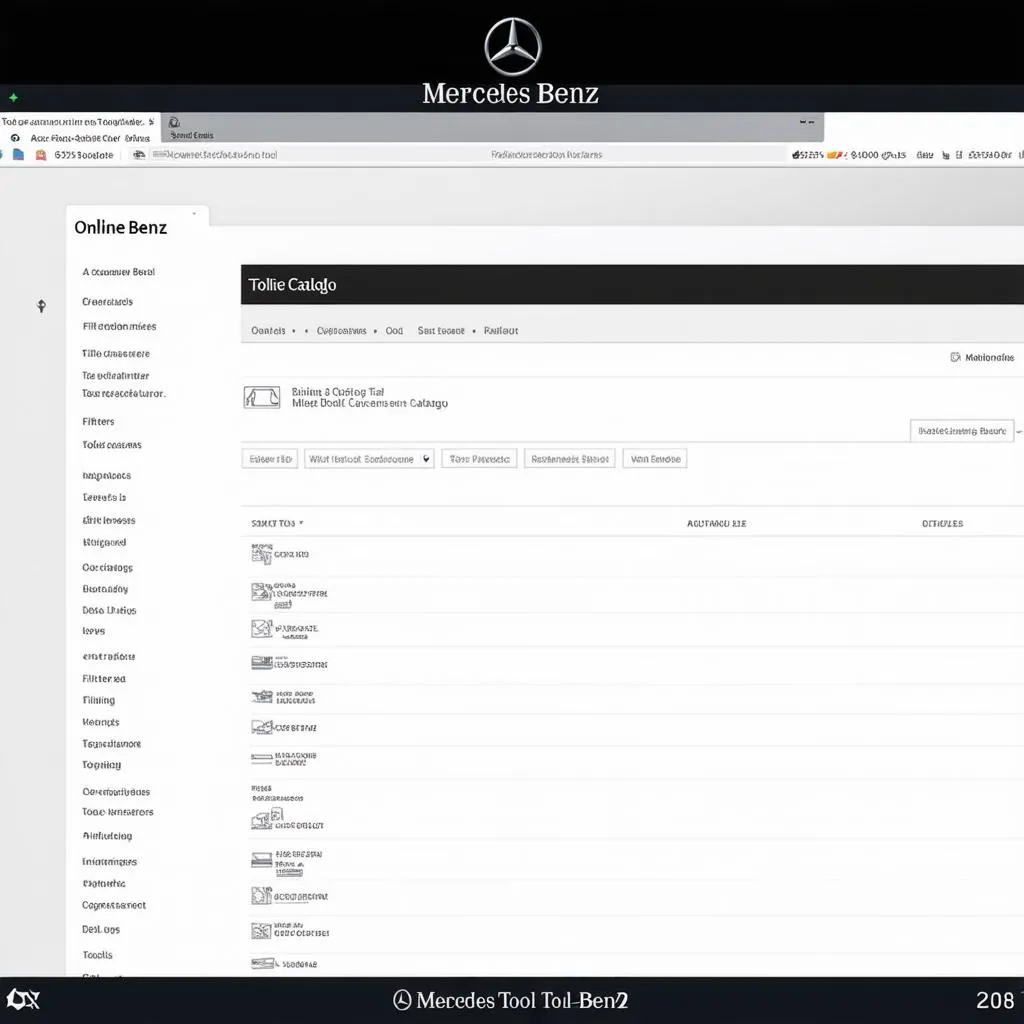Experiencing “limp mode” in your Mercedes can be frustrating and concerning. This safety feature drastically reduces engine performance to prevent further damage, often leaving you stranded with limited acceleration and speed. While a trip to the mechanic is usually recommended, understanding the potential causes and identifying the issue can save you time and money. This guide will walk you through the steps to diagnose and potentially fix your Mercedes in limp mode.
Understanding Limp Mode: Why is My Car Acting Up?
Your Mercedes’ onboard computer activates limp mode when it detects a problem with critical systems like the engine, transmission, or emissions. Essentially, it’s your car’s way of saying, “Something’s wrong, let’s take it easy.”
Recognizing the Signs: Is It Really Limp Mode?
Before you grab your toolbox, ensure your Mercedes is indeed in limp mode. Common symptoms include:
- Sudden Loss of Power: Noticeable decrease in acceleration even when pressing the gas pedal.
- Transmission Malfunction Warning Light: A warning light on your dashboard might illuminate, often accompanied by a message.
- Engine Check Light: The ubiquitous check engine light might also turn on.
- Limited Speed: Your Mercedes might be restricted to a low speed, usually around 30-40 mph.
- Gear Shifting Problems: You might experience rough or delayed gear changes.
If you’re experiencing several of these symptoms, it’s highly likely your Mercedes is in limp mode.
 Mercedes Dashboard in Limp Mode
Mercedes Dashboard in Limp Mode
Getting Ready to Fix It: Tools You Might Need
While some limp mode fixes require professional help, having a few essential tools handy can help you diagnose simple issues:
- OBD-II Scanner: This handy device reads diagnostic trouble codes (DTCs) stored in your Mercedes’ computer, providing valuable clues about the problem.
- Basic Toolkit: Having a set of screwdrivers, pliers, and wrenches is always beneficial for any DIY car maintenance.
- Digital Multimeter: This tool helps you check electrical components like sensors and wiring for faults.
Troubleshooting Limp Mode: A Step-by-Step Approach
1. Check for Obvious Issues:
- Loose Gas Cap: Surprisingly, a loose or damaged gas cap can trigger limp mode due to emissions system errors. Ensure your gas cap is securely tightened.
- Fluid Levels: Low transmission fluid or coolant levels can cause overheating and trigger limp mode. Check and top off fluids as needed.
2. Read Diagnostic Trouble Codes:
- Connect your OBD-II scanner: Plug the scanner into your Mercedes’ OBD-II port, usually located under the dashboard on the driver’s side.
- Retrieve DTCs: Turn on the ignition (don’t start the engine) and follow the scanner’s instructions to retrieve the stored codes.
- Note the Codes: Jot down the codes displayed on the scanner’s screen. These codes are crucial for understanding the root cause of the limp mode.
 Mechanic using OBD-II Scanner on Mercedes
Mechanic using OBD-II Scanner on Mercedes
3. Decipher the Codes:
- Online Resources: Numerous online resources, including the Cardiagtech website, offer comprehensive DTC libraries. Input the codes you retrieved to understand their meaning and potential solutions.
4. Address the Issue:
- Simple Fixes: Some issues, like a faulty sensor, might require a simple replacement that you can potentially tackle yourself.
- Professional Help: For complex problems like transmission or engine issues, seeking professional help from a qualified Mercedes mechanic is strongly advised.
FAQs: Common Questions About Mercedes Limp Mode
Q1: Can I drive my Mercedes in limp mode?
A: While technically possible, it’s not recommended to drive long distances in limp mode. The reduced power and speed pose safety risks, and continuing to drive could potentially worsen the underlying issue.
Q2: How much does it cost to fix limp mode in a Mercedes?
A: The cost can vary significantly depending on the underlying cause. A simple sensor replacement might cost a few hundred dollars, while major engine or transmission repairs could run into thousands.
Q3: Can a software update fix limp mode?
A: In some cases, software glitches can trigger limp mode. A software update from a Mercedes dealership or a reputable independent shop might resolve the issue.
Q4: Are certain Mercedes models more prone to limp mode?
A: While any car can experience limp mode, some Mercedes models, particularly those with complex electronic systems or known issues, might be more susceptible.
Cardiagtech: Your Resource for Automotive Diagnostics
For accurate and reliable automotive diagnostic tools and resources, check out CARDIAGTECH. Their range of products and information can empower you to better understand and maintain your Mercedes.
In Conclusion
Experiencing limp mode in your Mercedes is never a pleasant experience. By understanding its causes, recognizing the symptoms, and following the troubleshooting steps outlined above, you can take control of the situation and get your Mercedes back on the road safely. Remember, if in doubt, always consult a qualified Mercedes mechanic for professional diagnosis and repair.


